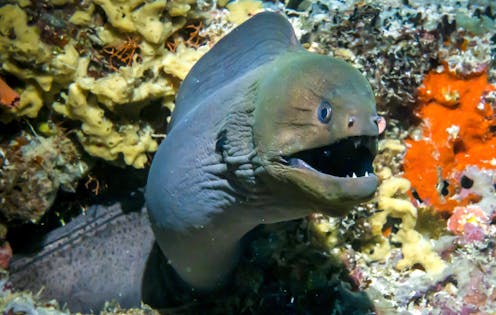Eels are some of nature’s weirdest creatures. Here are 5 reasons why they’re such cool little freaks
- Written by Kylie Soanes, Postdoctoral Fellow, School of Ecosystem and Forest Sciences, The University of Melbourne

It’s the question that baffled scientists for hundreds years – where on Earth do eels come from?
Aristotle’s best guess[1] was that they spontaneously generated. Danish biologist Johannes Schmidt was pretty sure they spawned in the Sargasso Sea – right near the Bermuda Triangle, for a little extra mystery. His extensive biological surveys over 100 years ago found lots of young eels in this area, leading him to conclude they must hatch somewhere nearby.
But eggs or adult eels breeding were never seen anywhere nearby. So the question remained unanswered … until now.
Last week, a team of researchers were able to confirm[2] that yes, the 1-metre long European eel people knew from their local river really did come from a sub-tropical sea up to 10,000 kilometres away. This team had something history’s biggest thinkers didn’t: cool tech.
Pop-up Satellite Archival Tags are a relatively new type of tracking device that allows scientists to map the movements of marine creatures in a way that simply wasn’t possible before. The tags record where the animals travel, how fast they move, and even how deep they dive. Then, the tags detach and float to the surface where they can transmit data back into the hands of eager scientists.
The European eel’s migration is impressive, but they are still shrouded in mystery. All the eels on the mainland come from the same spawning place – yes, even the eels in backyard ponds, which can slither along land[3] to the sea after only a little rain. Eels can even climb up enormous dam walls! But how do they know where to go? How do they decide when?
Australia, too, has its own illustrious eels. They generally keep to themselves, so much so that most of us wouldn’t even know they’re there. But with all this rain and flooding, there’s a chance you might stumble across one soon.
So I thought this was a good time to share five things you might not know about eels, including in Australia.

















